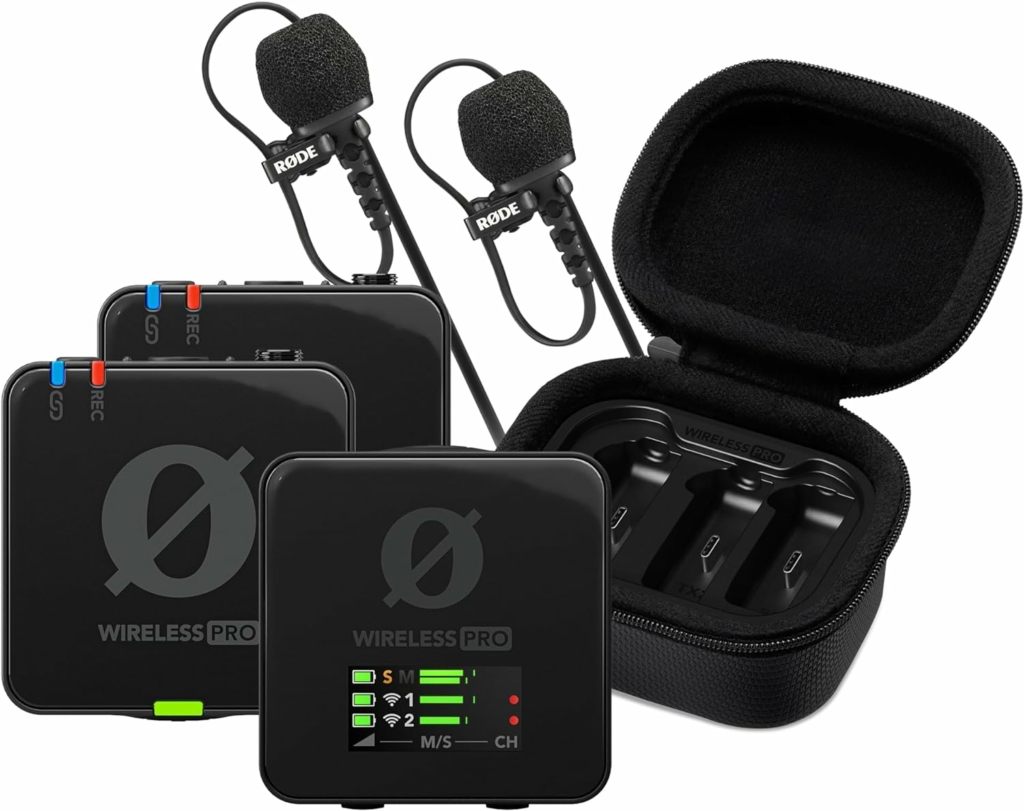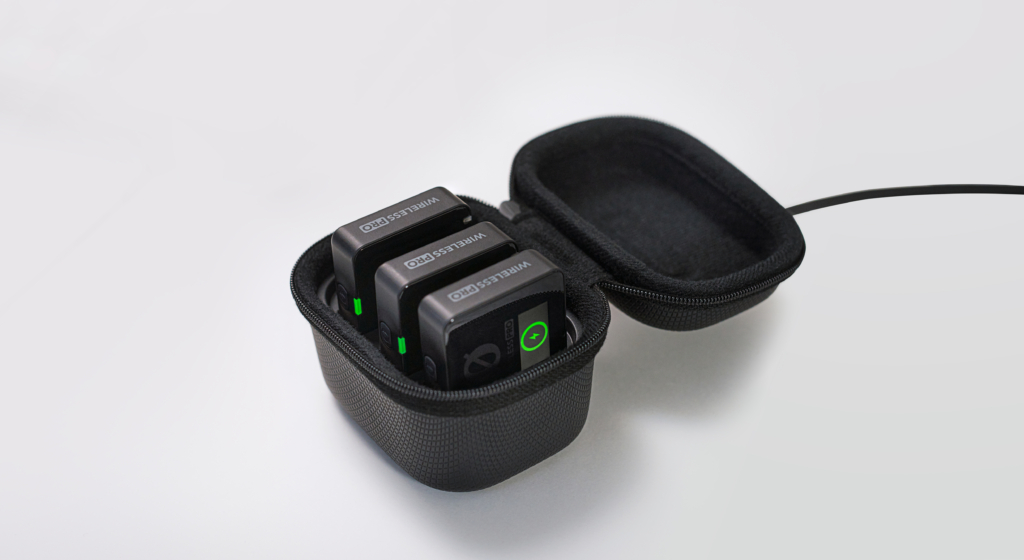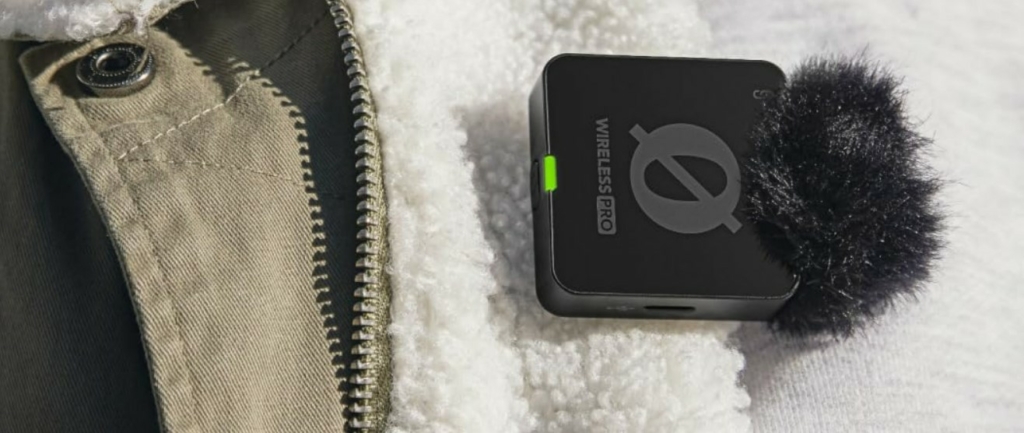Rode Wireless Pro Review: Throw This Mic Away?
Apologies for the clickbaity title of this Rode Wireless Pro review, but “throw this mic away” must’ve been on the UPS driver’s delivery note, because that’s exactly what they did!
Fortunately, the kit was later handed in to me by a kind lady who found it lying at the side of the road. No, this isn’t some sort of road/Rode pun. It was literally lying there, boxed up, in a ditch.
Anyway, despite UPS’s best efforts (their tracking code now assures me that the parcel has been delivered 😅), the Rode Wireless Pro safely arrived for review. And I’m glad it did, this is a really cool bit of kit.
We received this review unit free of charge, and we sometimes use affiliate links which help support all of our free content. We may earn a small commission should you choose to buy through them, though never at any cost to yourself. Rest assured, these factors never cloud our judgement when writing reviews, and we’ll always give you our honest thoughts, both good and bad!
What is the Rode Wireless Pro?
The Rode Wireless Pro, in Rode’s own words, is “the most powerful compact microphone system ever”. But, if you wanted Rode’s take on it, you wouldn’t be reading a third-party review, would you? Here’s what I pulled out of the box, after its ditch-based adventure.

Two Transmitters
These are your primary microphones in the kit, and here’s the cool thing: they each have on-board recording capabilities. That means each transmitter is like its own wee digital recorder. If your signal drops between transmitter and receiver, the audio recorded on the former will be totally uninterrupted. It’s sort of like an on-location double-ender.
The transmitters have built-in mics on them, or, you can plug in an external 3.5mm. And that’s handy, because you also get…
Two Lavalier Mics
Two Rode Lavalier II mics, at that. We’ve always been big fans of the Rode SmartLav+, and Rode are masters of this type of kit.
A Receiver
This is the hub of the operation. Plug it into your computer, smartphone, or camera, and you can record audio from one or both transmitters.
Two Magnets
The proper name for these is MagClip GOs. As someone who’s never been capable of attaching a wearable mic without it looking like wild dogs have attacked me, this is a brilliantly novel idea. The transmitters have a magnetised panel on them, so you shove one of these other magnets up your jersey and… well, you know how magnets work. Great concept.
A Charge Case

Carry cases are typically the most boring “and also” section of any gear review, but not this one. It charges your kit in a neat, safe, and portable way. When I opened the box, there were wee lights shining and everything. Maybe that’s why the UPS guy got spooked and threw it out the window.
An Accessory Case
I know, this is the boring bit. But it helps keep all your cables tidy, okay?
Some Cables
A wireless kit… with cables? You still need some electronic spaghetti to make the Rode Wireless Pro play with all your other devices. There are 3.5mm connections, Lightning connections (Apple stuff), Android connections, and USB connections. If something is connectable, there’s a cable for it.
Three Furries (Wind/Pop Shields)

If you like the “hey, some bizarre and possibly lethal tropical insect has just landed on my chest” look, then these are perfect for your needs.
The furry things also come in handy if you plan to record outdoors in breezy conditions. Or, if your posture is so strange that you somehow continually pop a wearable mic.
One final scenario I thought of that seems unlikely, but stick with me, is if you were interviewing someone whose head was level with your chest, and they were standing in very close proximity to you, thus popping your own mic each time they spoke. This is almost certainly never going to happen, and I’ve just wasted both our time by bringing it up.
Onwards…
Stable Wireless Audio up to 260 Metres
There’s no point in being wireless if you only have a cable-length range before the signal starts to drop out. With the Rode Wireless Pro, it seems you’re safe up to 260 metres. For context, the Rode Wireless Go was 70 metres, and the Rode Wireless Go II was 200.
But what really is 260 metres? Here are three real-world examples:
- A standard international football pitch, as defined by FIFA, is approximately 105 meters in length. If you were to place two and a half football pitches end to end, you’d get close to 260 meters.
- The blue whale, the largest animal on Earth, can reach lengths of up to 100 feet (around 30 meters). To visualize 260 meters, imagine more than eight blue whales lined up in a row.
- The height of the Statue of Liberty, including its pedestal, is around 93 meters. You’d need almost three Statue of Liberties lined up to reach 260 meters in length.
And if you happen to present the “my co-host and I chat at either end of nine blue whales lined up in a row” podcast, you always have the backup recording on your transmitter!
32-Bit Floating (Be as Recklessly Loud as You Like)
32-bit floating is a bit of an audio trend at the moment, but with good reason. This protects your audio from clipping. In other words, this protects your recordings from distortion when anything you’re recording is too loud and your gain set too high. It’s a real boon for folks who are incompetent, lazy, or clueless (if it makes you feel any better, I am all three).
Examples of Rode Wireless Pro Use & Setups
Do you mean aside from two podcasters recording at either end of a row of nine blue whales? Alright, how about:
- A podcasting Yoga instructor who’s recording audio and video in a range of dynamic poses
- Two tabletop wargame podcasters recording audio and video battle reports
- An on-the-move podcaster who might be recording a talk on stage one day, an interview at a coffee shop the next, and so on
- An UrbEx or paranormal investigation show where two podcasters explore abandoned buildings
- A foraging or outdoors series where creators record in the forest
There’s really no way you couldn’t use the Rode Wireless Pro for your podcast. But, obviously, if you’re doing solo or remote recordings at your computer, it’s going to be an unnecessary purchase. This brings me to that all-important gear review question…
How Much Does the Rode Wireless Pro Cost?
$430 or £400 seems to be the going rate for a Rode Wireless Pro Kit at this moment in time. This definitely puts it in the “Premium” category, though you do get a lot of gear and a lot of options for your money.
If you like the idea of it all, but the cost is prohibitive, you can still get many of the benefits for almost $200 less by opting for the Rode Wireless Go, or Wireless Go II.
Software & Recording Modes
I used two pieces of software to work the Rode Wireless Pro, Rode Central (phone and computer), and Rode Connect (computer-only). Both are free.
Central is more of a setup and configuration-style app, whilst Connect is like a digital version of the famous Rodecaster Pro. I talked about Connect in-depth in my review of the Rode NT-USB multi-USB mic setup.
In short, you set up in Central and record into Connect (if you’re on a computer). If you’re recording on a smartphone, you’d use a voice capture or audio app, or, record video and the audio will be provided courtesy of the connected Rode Wireless Pro kit.
In Rode Central, you can toggle through some “GainAssist” settings, which – can you believe it – offer some help with your gain levels.
Now, you might be about to say, “But I thought 32-bit floating has made me practically invincible?” and that’s true. But only insofar as you’re protected from clipping. Your levels can still be all over the place, making for a poor listening experience. Rode’s GainAssist helps to gently smooth and level out your audio, making it more consistent from its quietest and loudest parts.
‘Auto’ is the hardest worker here. ‘Dynamic’ does some, but not as much. Or, you can YOLO it and turn GainAssist off altogether.
As a word of caution, having one or both of the Rode software on my computer seemed to cause some conflict with other recording programs. It didn’t lead to any disasters, and it was never anything that couldn’t be fixed, but it was still a minor annoyance at the moment.
How Does the Rode Wireless Pro Kit Sound?
Time to make your own mind up, then. Pop some headphones on and have a listen through these sound samples, recorded in two modes (Auto and Dynamic), directly into the transmitters, and via the receiver into both a smartphone and a computer.
I was recording in an “ordinary” room to give a fair reflection (no pun intended) of how the kit sounds in typical locations.
Recording Into a Smartphone
Computer Recording on Auto Mode
Computer Recording on Dynamic Mode
Transmitter Recording on Auto Mode
Transmitter Recording on Dynamic Mode
Rode Wireless Pro Review: The Big Conclusion
Whilst a certain UPS driver hated the Rode Wireless Pro so much that they threw it out the window, I can’t agree with their assessment. I think it’s an excellent, versatile, feature and gear-packed bit of kit.
Of course, for the $430/£400 asking price, you’d hope it would be. But it’s still great value for money, so long as its wireless capabilities are a fit for your podcasting needs.
Most podcasters don’t need to buy the Rode Wireless Pro. You can get set up with all of your podcast equipment for less than a quarter of the price. But for those who will get the most from its functionalities, it could be a game-changer.
Our Rating: 4.9
- Audio Quality: 5/5
- Flexibility: 5/5
- Value for Money: 5/5
- Simplicity: 4/5
- Competence of UPS Delivery: 0/5

